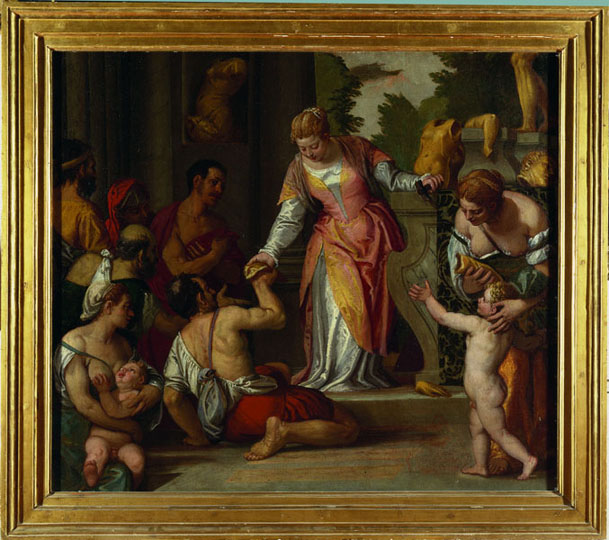
 |
This work stands out in the exhibit as a testament of love as a born gift, far from earthly things and the desire of the infinite. The painting, which can be attributed to Veronese’s workshop, so well-versed in the representation of the intersection between what is sacred and what is profane, represents an episode in the life of Cristina, daughter of Urbano, prefect of the Roman town of Volisnii, who as a child had been initiated into the Christian faith by a servant without her parents knowing. Attacked by Urbano, who learned of her conversion, Cristina was imprisoned in the palace, along with twelve servants and the statues of pagan idols, until one night she took the statues of Jupiter, Apollo and Venus, threw them from the tower and, having destroyed the idols of gold, distributed their pieces among the town’s poor. In this action, a prelude to her martyrdom, Cristina symbolizes the capacity to reach out to the needy and the decision of unconditional love towards God, something that is even stronger than filial piety. |